
Exploring the Target Room on the Discovery Tour, Jewel Cave National Monument / Rebecca Latson
Caves feature prominently in several units of the National Park System, including Wind Cave National Park and Jewel Cave National Monument, both in South Dakota. I embarked on an April road trip to visit park units in that state and spent a couple of days with my cameras exploring these second-longest (219.8 miles / 353.69 km) and third-longest (167 miles / 268.76 km) cave systems in the U.S., both above and below ground.
Wandering the parks above ground, I envisioned dark tunnels hundreds of feet directly beneath my hiking boots. It’s easy to think that as the park maps appear to show subterranean passages spread widely across each unit. That’s not really the case, though. Instead, I should have imagined I was a drone hovering over the park surface, looking down with x-ray vision into the cave depths (btw, drones are prohibited in the parks). The Wind Cave passages cover about one mile of surface area, most of it beneath the park’s visitor center and administrative/housing buildings. Jewel Cave covers about four miles of surface area. The Wind Cave ranger leading my tour instructed us to think of the cave as a bowl of spaghetti, the noodles (tunnels) crammed in and looping over and under each other, restricted by the bowl’s sides, from rim top to bowl bottom. Yes, both cave systems are extensive, but with more of a vertical rather than horizontal spread.
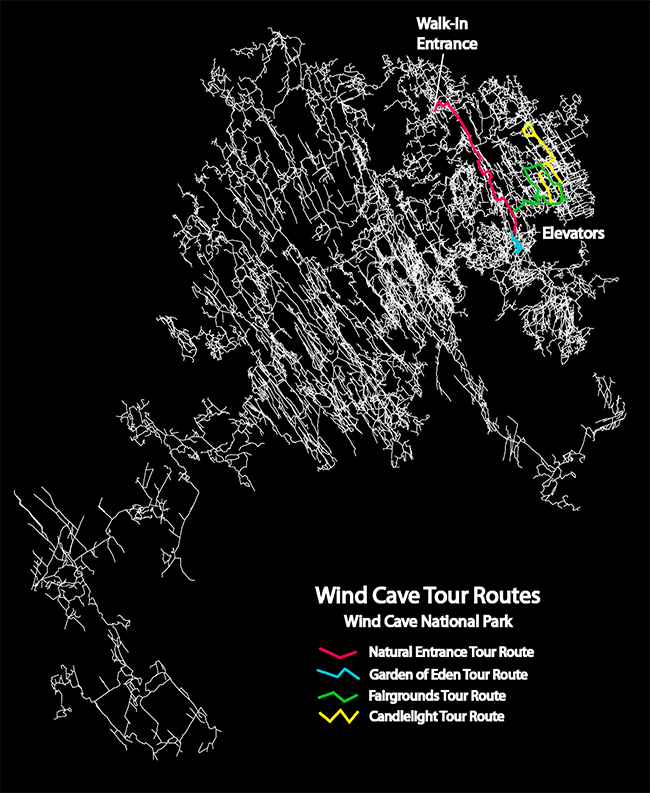
Cave system layout nap with outlined cave tours, Wind Cave National Park / NPmaps.com
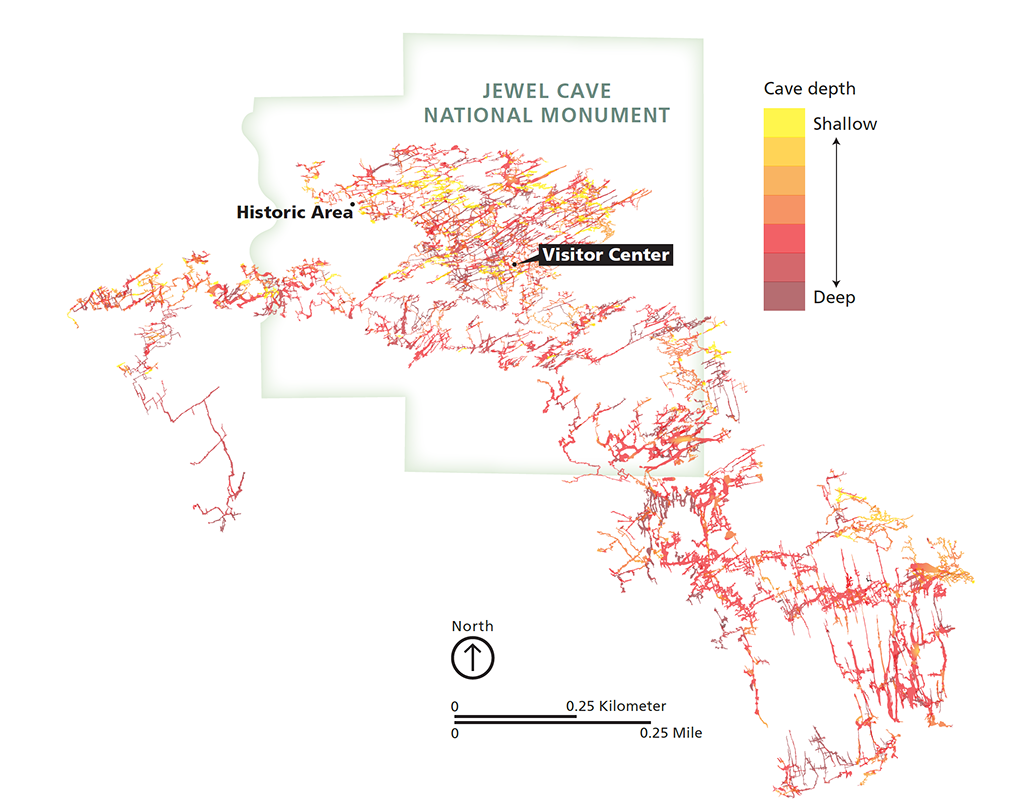
Layout of the cave system at Jewel Cave National Monument / NPS file
Above ground, both national park and national monument are nestled within the rolling Black Hills, so called because of the preponderance of dark green ponderosa pines blanketing the landscape. Bison, prairie dogs, and pronghorn are among the wildlife roaming topside, while bats lay claim to the pitch-black recesses beneath those South Dakota hills.
Wind Cave and Jewel Cave visitor centers are about 33 miles apart. Although relatively close in distance, the caves are not currently believed to be connected. Jewel Cave is all about the cave, so you won’t find many pullouts, wide road shoulders, or view areas for above-ground landscape shots - certainly nothing like what Wind Cave provides visitor and vehicle.
At Jewel Cave, I noticed a landscape of felled and charred trees over bared hillsides from the 2000 Jasper Fire, which consumed approximately 90 percent of the land (>83,000 acres). Reforestation efforts continue to this day and you’ll see the hills dotted with saplings surrounded by protective webbing.
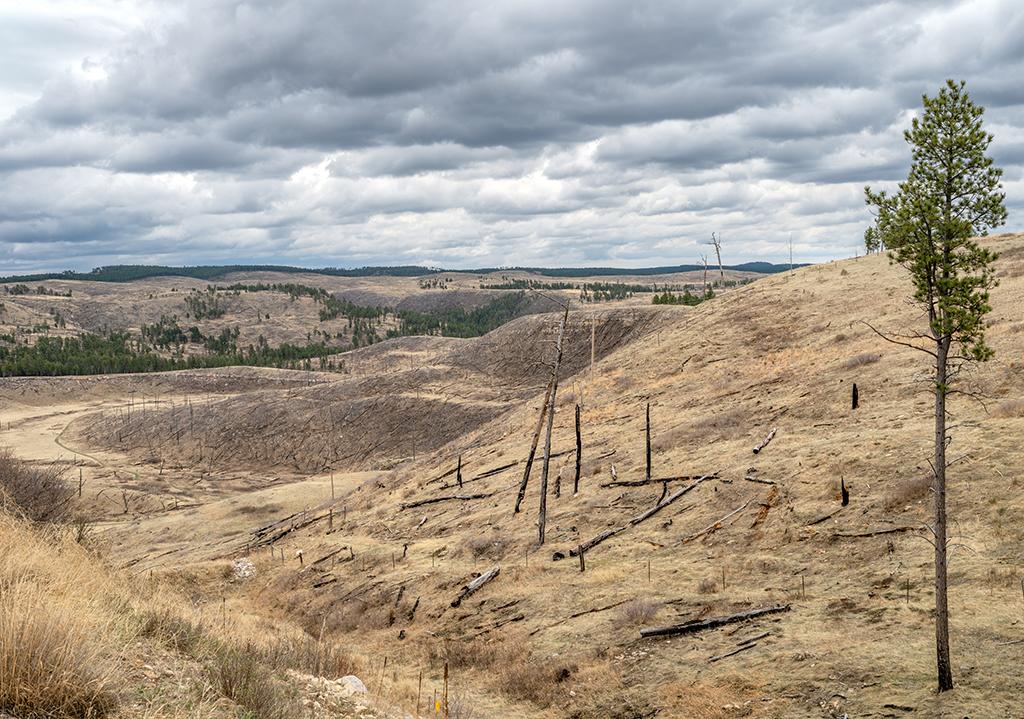
The view above ground at Jewel Cave National Monument / Rebecca Latson

The ongoing reforestation effort after the 2000 Jasper Fire, Jewel Cave National Monument / Rebecca Latson
To get the images you see here, I parked along a rocky dirt road just off the highway and walked back to an overpass, mindful of the occasional cars zooming past. There was no room for a tripod, so the shots are handheld. I used the “burst method” of pressing down on the shutter button for several successive clicks. Although taking up space on your camera’s memory card, the burst method usually ensures at least one good shot out of the series.
According to the Jewel Cave park map, there are several hiking trails, but I spent only a half day in this park, which I visited immediately after my Wind Cave Natural Entrance Tour. Above ground, what I really wanted to photograph was the CCC-built cabin located in this national monument’s historic area. Unfortunately for me, that area won’t open until this summer.
Wind Cave National Park, on the other hand, provides view areas and pullouts all along the park road. From these spots you can watch and photograph the antics of prairie dogs digging, scampering, or engaging in other interesting behavior around their expansive “towns.”

Weeee-ooooo! A prairie dog engaging in some interesting activity, Wind Cave National Park / Rebecca Latson
You’ll spy some of the approximately 400 – 450 Bison roaming the landscape.
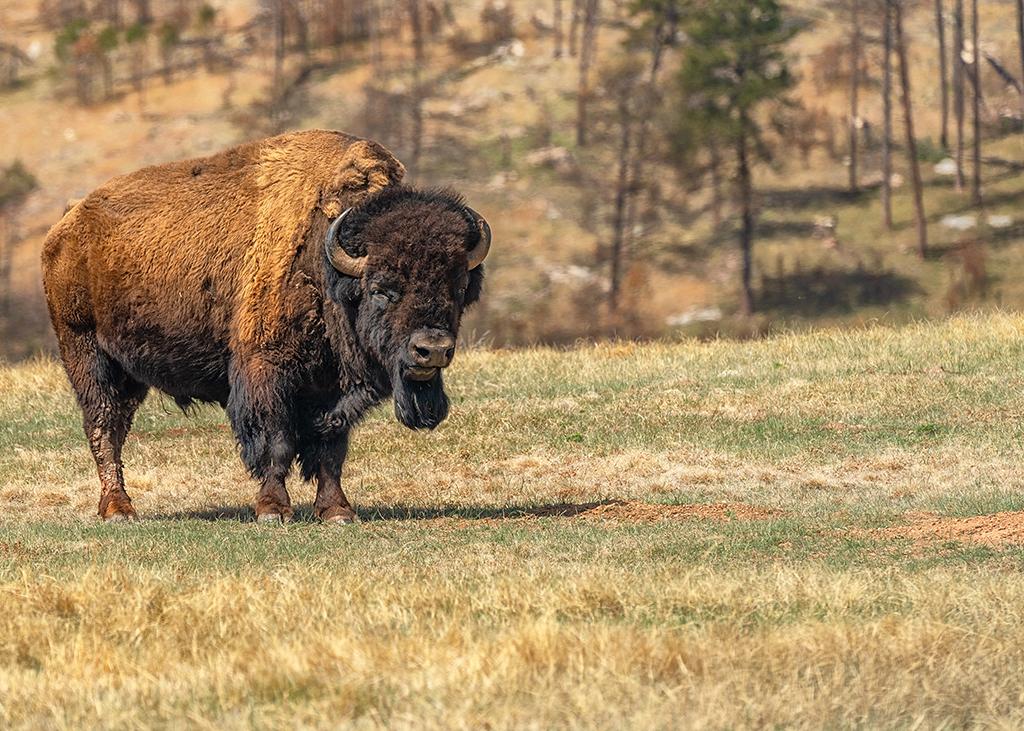
Bison in the Black Hills, Wind Cave National Park / Rebecca Latson
Pronghorn, reintroduced to the park in 1914, also share space with the bison and prairie dogs.

A telephoto close-up of a lone pronghorn next to the road, Wind Cave National Park / Rebecca Latson
Where ever you see wildlife, please give them space, keep your distance, and use your telephoto lens or telephoto setting to capture the scene. Btw, you can rent an expensive telephoto lens for a fraction of it’s retail price from online sources like lensrentals.com. I rented a 200-600mm lens specifically for the wildlife opportunities during this South Dakota road trip.
If your telephoto lens is not long enough for a close-up of bison or pronghorn, go ahead and include those grazers in your landscape shots. This allows your viewing audience the opportunity to see the environment in which the wildlife lives and roams.
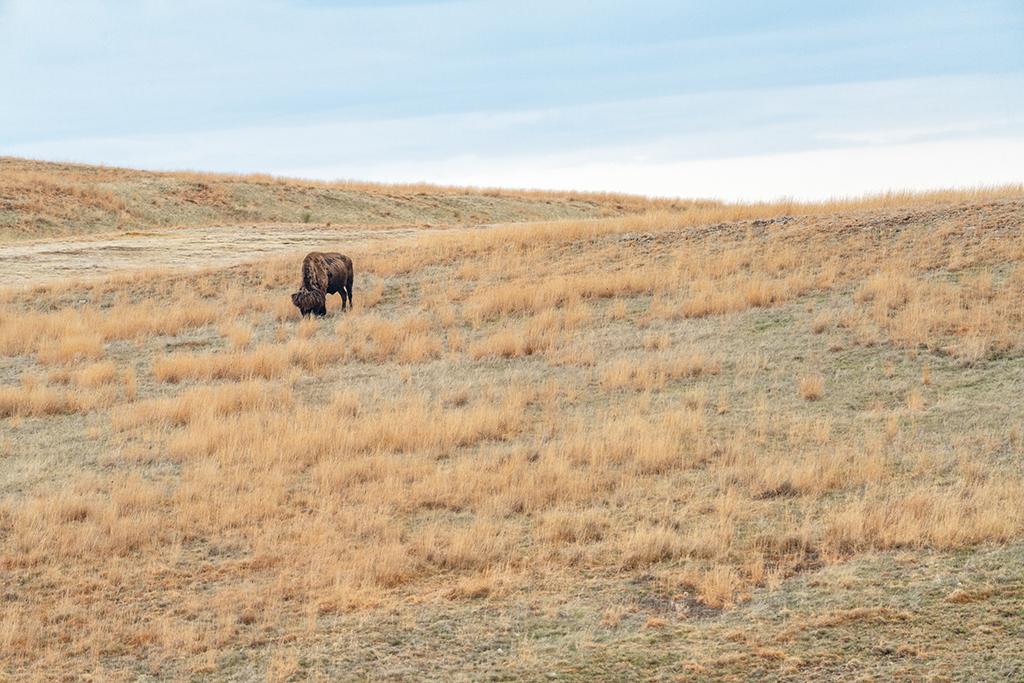
A lone bison grazing the landscape, Wind Cave National Park / Rebecca Latson
For a fun experiment, convert some of those color bison shots to black-and-white. Removing that color really brings out the textures of face and fur, emphasizing subtleties of light and shadow.
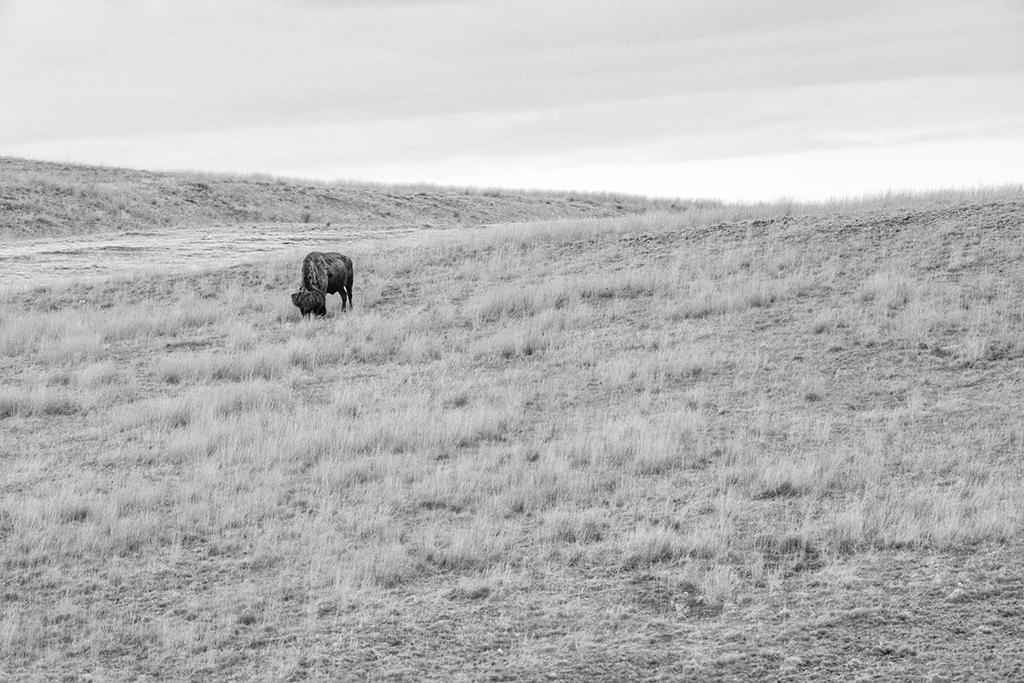
A lone bison grazing the landscape (converted to monochrome), Wind Cave National Park / Rebecca Latson

RBF (Resting Bison Face), Wind Cave National Park / Rebecca Latson

RBF (Resting Bison Face) in black-and-white, Wind Cave National Park / Rebecca Latson
You’ll get great views of the Black Hills landscape at Wind Cave, over which might gather dark, dramatic springtime storm clouds. Don’t get caught on exposed or high ground during inclement weather and make sure you and your camera are prepared for the precipitation.
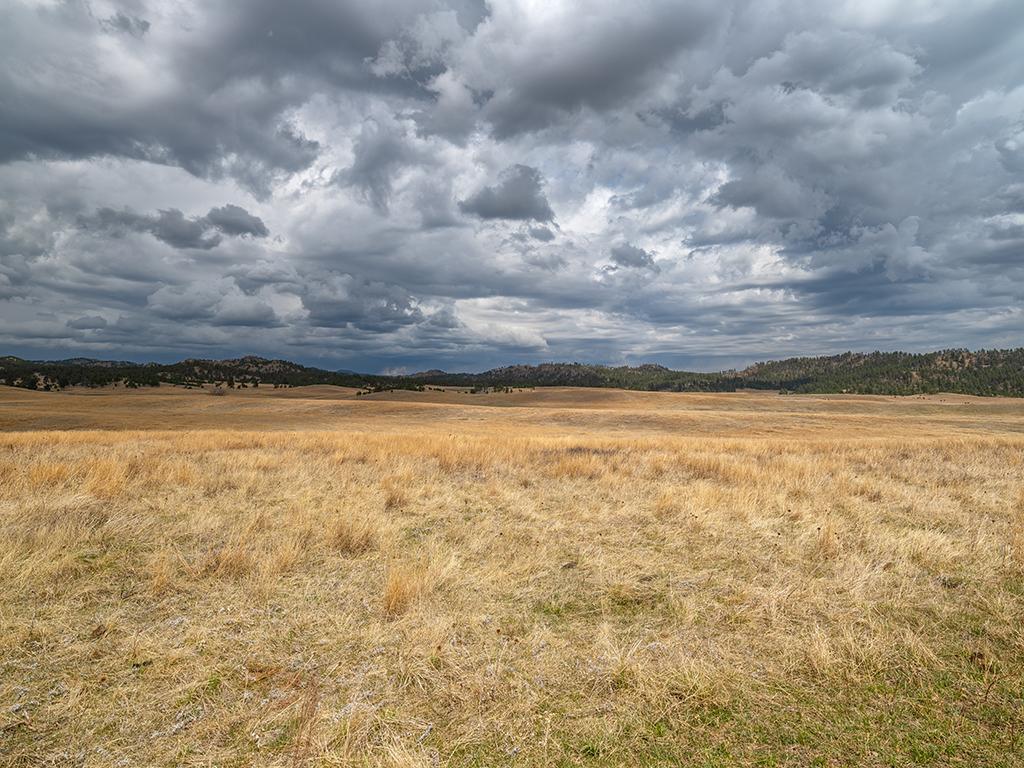
The calm before the storm, Wind Cave National Park / Rebecca Latson
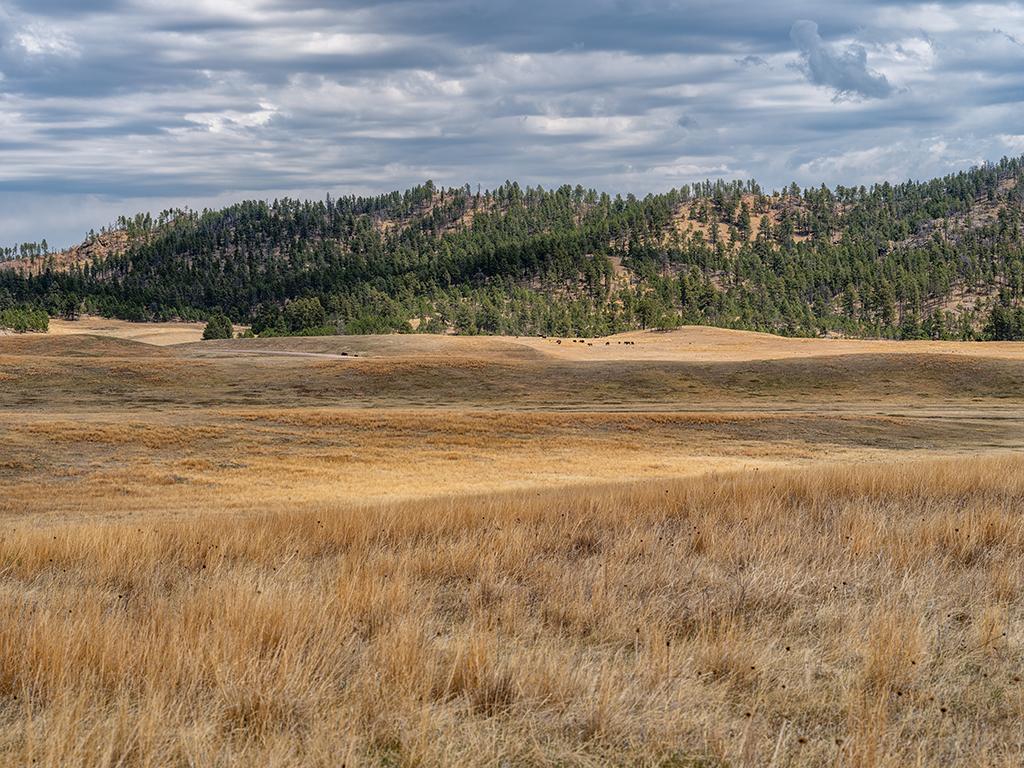
Looking from Wind Cave National Park into Custer State Park / Rebecca Latson
If the clouds are dramatic enough, convert those landscape images to monochrome, as well, because black-and-white emphasize cloud textures.

The calm before the storm in black-and-white, Wind Cave National Park / Rebecca Latson
Since these park units are named after the caves they protect, let’s discuss subterranean photography.
While scrolling through Instagram, you will see gorgeous shots of Jewel Cave and Wind Cave. You may assume the photographer (ranger or caver or both) either hand held an SLR camera set with a high ISO, or attached it to a tripod for a long exposure (high ISO, very slow shutter speed, wide open aperture). Maybe a flash was also utilized on either SLR or point-and-shoot (P&S). If the photographer used a smartphone camera for those shots, the area must have been well lit with no other people milling about to blur the scene. Those Instagram photos you admire are beautifully exposed and nicely composed, certainly nothing like the hurried shots you might capture with your own smartphone during a cave tour.
Case in point, upon reserving my spots for Wind Cave and Jewel Cave tours, and after reviewing the dos and don’ts for each tour, I decided upon the brilliant idea of using just my smartphone camera with an occasional P&S shot thrown in for good measure. I didn’t want to risk slipping on wet stairs or otherwise banging up my SLR, and tripods are prohibited on these tours. I figured this experience would make a great article about using one’s smartphone for low-light interior shots.
Cave tours tend to be crowded affairs and it’s necessary to try and keep pace with the ranger leading at a brisk gait for extra time answering questions at certain spots in the cave while ensuring an on-time ending to start the next tour. A quick shot here and there in places when the ranger stops to discuss a cave feature is often the best one can hope for.
I must tell you, while I do love my smartphone’s camera and video capabilities under well-lit circumstances (e.g. daylight above ground), I am less than enamored with the results of my cave shots. Could be me. Could be the smartphone camera’s very small sensor. The upshot here is that the few relatively respectable images you see in this article are the result of hard work adjusting shadows and noise (grain) levels for each photo.
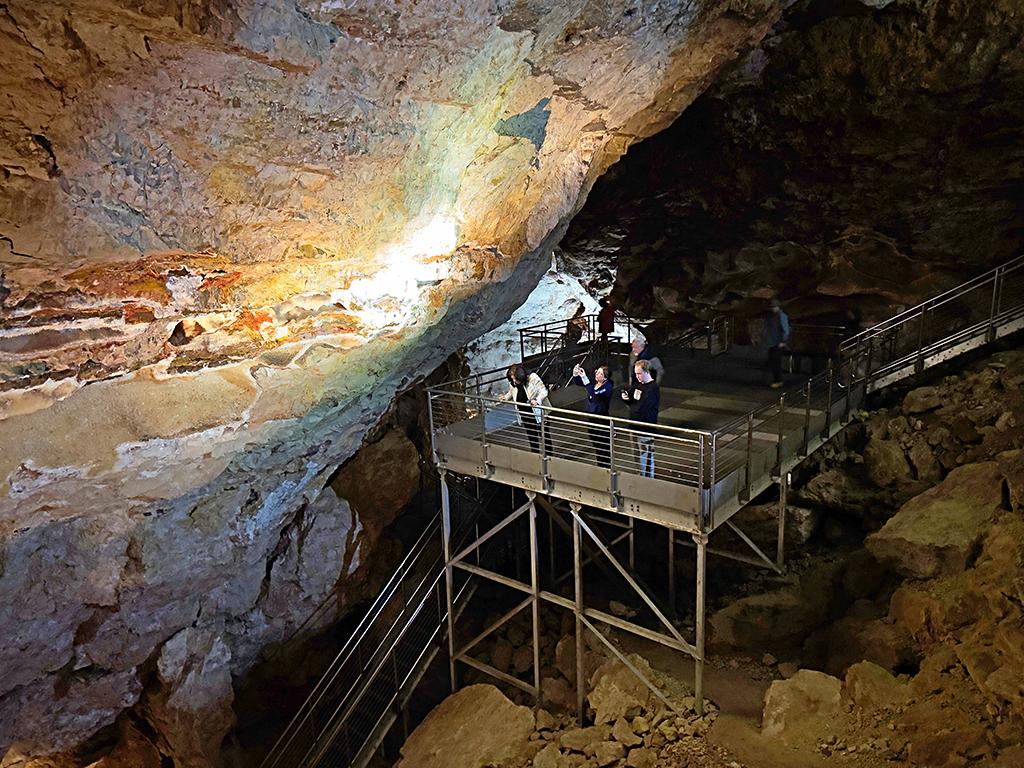
Photographing the dogtooth spar in the Target Room, Jewel Cave National Monument / Rebecca Latson
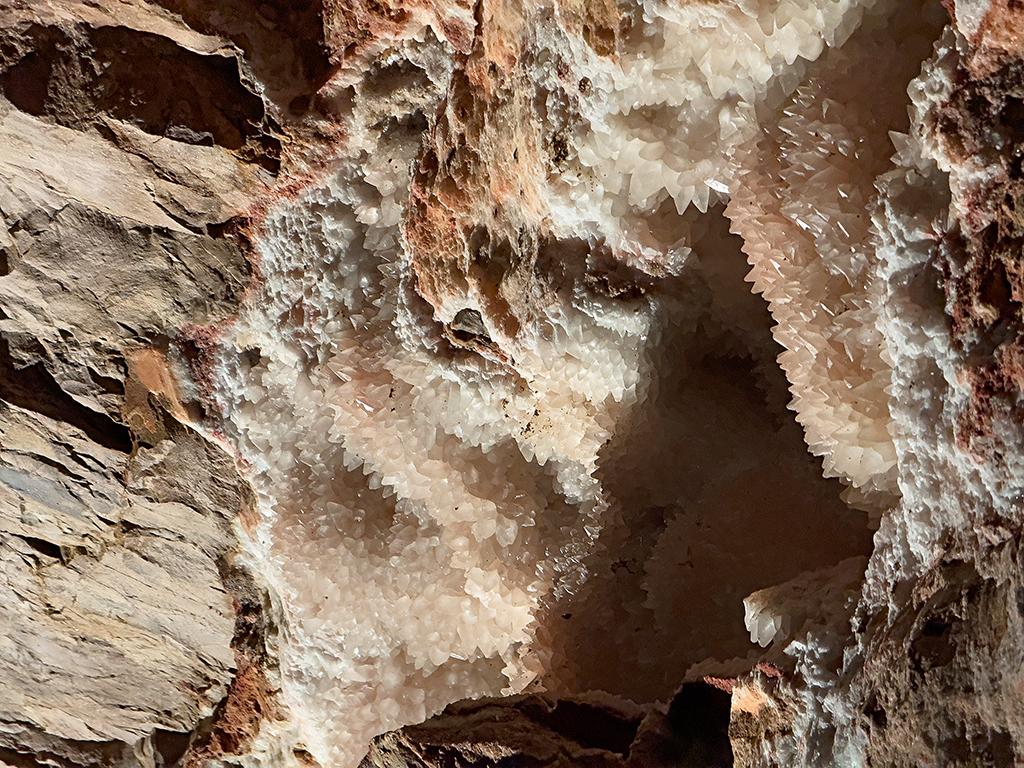
Dogtooth spar, a variety of calcite that forms crystals resembling dog teeth and found in caves and geodes, Jewel Cave National Monument / Rebecca Latson
As such, I’m advising you to either switch out your smartphone for another camera (or use it as backup). I know, easier said than done. I admit, viewing the photos I took with my iPhone look pretty good - on the smartphone - which may be how most of you will show off those cave tour images to friends, family, and colleagues. Viewing those same images with a critical eye from the larger venue of a computer screen, however, turned up shadow, sharpness, and grain issues no amount of editing would cure. Lesson learned.
If you do carry your SLR (or P&S) into the caves, use a flash for the P&S and, for the SLR, set your camera’s ISO to between 400 – 1600, open that lens aperture (f-stop between 1.4 and 4.0), and slow down your shutter speed to 1/25 – 1/40 (slow but not so slow that you’ll blur the image handholding the camera). Use the burst method.
Make certain you capture close-ups of cave speleothems (formations) such as boxwork, popcorn, and gorgeous dogtooth spar. Use a flash or capture your photograph near one of the lighted cave features.

Look up to the ceiling in Wind Cave and you'll notice the web of cave boxwork. Ninety-five percent of the world's boxwork is found in Wind Cave at Wind Cave National Park / Rebecca Latson

Cave "popcorn:" knobs of calcite that form where water seeps through pores in limestone, creating popcorn-like clusters, Wind Cave National Park / Rebecca Latson

Writing from the late 1800s by early cave visitors, a part of the history of Wind Cave's early exploration, Wind Cave National Park / Rebecca Latson
Next cave tour, I’m taking my SLR with a small lens attached, and will not be utilizing the smartphone. And I do want to return to Wind Cave and Jewel Cave for more cave tours, since these park units are all about the caves and there is some incredible scenery below ground just as much as above ground.
Note: If you’d like to know more about these caves and their tours, the Traveler wrote a 2018 article about this.


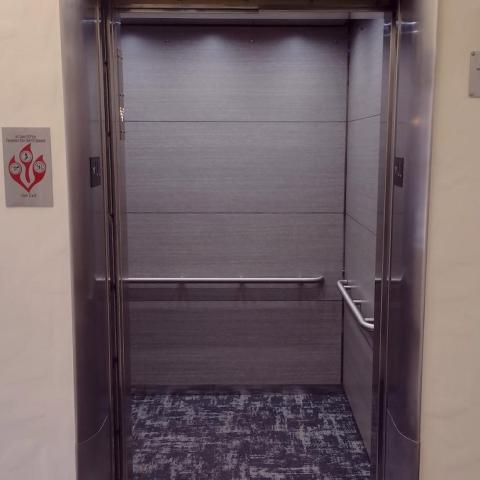
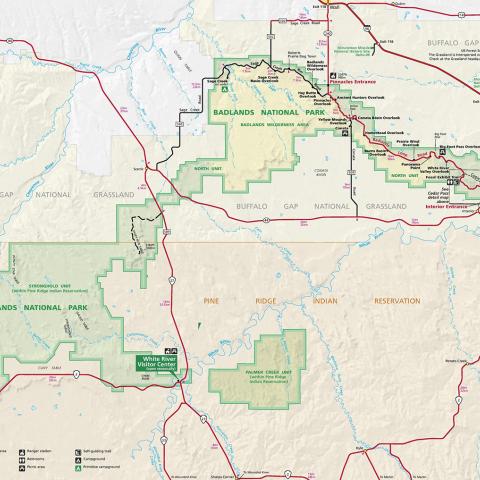
 Support Essential Coverage of Essential Places
Support Essential Coverage of Essential Places






